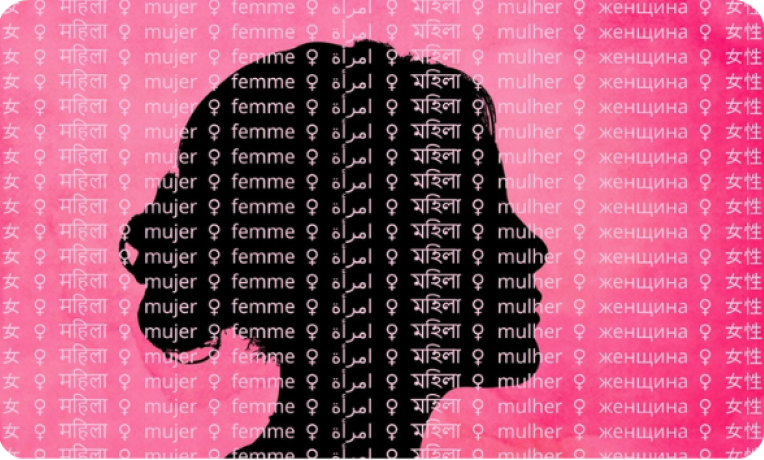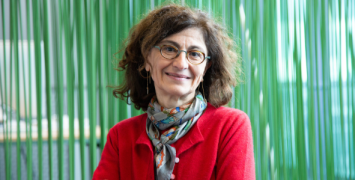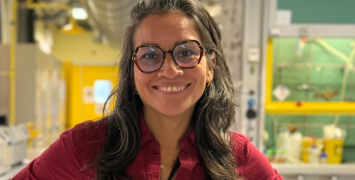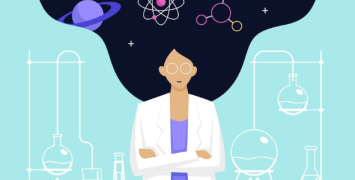Seeing the full picture: Why science needs every mind

Science thrives when every perspective is part of the story. Yet, with women making up less than one-third of researchers globally, our understanding remains incomplete, filtered through a narrow lens that obscures crucial insights, writes Lora Gailly.
Imagine looking out a window, but one-third of it is covered. The world beyond is still visible, but distorted - your view is narrowed, incomplete, and misleading. That is what science looks like today: with women making up less than one-third of researchers worldwide, we are working with a lens that leaves too much unseen.
This is more than a number. It represents missed perspectives, untapped insights, and innovations that never see the light of day. Each time a woman walks away from science - because she feels unwelcome, unsupported, or held back by discrimination - the world loses a mind that might have advanced discovery. In an era of climate crises, pandemics, and rapid technological shifts, can we afford to ignore these minds?
Slow progress
There is encouraging news: women’s participation in higher education has risen worldwide (UNESCO Global Education Monitoring Report 2024/5). Yet women are still less likely to pursue studies in science, technology, engineering, and mathematics (STEM). According to UNESCO Institute for Statistics data, between 2018 and 2022, only 35 % of STEM graduates were women. The gap widens further along the research pipeline: in 2022, women accounted for just 31.1 % of professional researchers globally. Progress over the past decade has been slow and uneven, reflecting persistent structural barriers that continue to discourage or block women from entering, remaining, and advancing in science.
The picture varies across regions. In South and West Asia, for example, women’s participation in research rose markedly, from 18.9 % in 2012 to 26.9 % in 2022. Central and Eastern Europe, by contrast, saw a decline, from 40.1% to 37.9 %. The gaps are not only regional but also sectoral: women are more present in academia and the public research sector than in private industry (UNESCO Status and Trends of Women in Science, 2025). Leadership positions reveal even starker imbalances: only one in four of the world’s 200 top higher education institutions is led by a woman (Times Higher Education, 2023), and women hold just 17 % of seats in national science academies (ISC/IAP, 2020).
These numbers matter not just for fairness; they matter for the quality of science itself. More women bring more perspectives, and more perspectives make teams stronger, more inventive, and more resilient. Diverse teams ask richer questions, design more inclusive experiments, and generate solutions that truly serve everyone.
Human-centred approach
To shape its 2025 communication campaign “Imagine a world with more women in science”, UNESCO asked over 700 researchers across disciplines and regions a simple but powerful question: “What would be different if more women were involved in science?”. The responses painted a vivid picture. In this imagined future, research would expand to address a wider range of needs, including those often overlooked, such as the effects of diseases or technologies on marginalised communities. Innovation would accelerate, ideas would become more creative, and solutions would be more well-rounded. Science would adopt a human-centred approach, guided by a stronger ethical lens and a sharper focus on societal impact. Collaboration would be prioritised over competition. New role models would become visible, inspiring girls to pursue STEM studies and giving women already in science the confidence to overcome imposter syndrome, which is known to be more prevalent among women in STEM.
So how do we ensure more voices are truly heard? The burden should never fall on women to fit into a male-dominated system. The system itself must change, not merely to bring women in but to build an environment where everyone can thrive, contribute, and gain recognition. Policies and initiatives must confront systemic biases and foster genuine equality of opportunity. Culture and structures should be inclusive by design, not as an afterthought. This means meaningful mentoring and sponsorship, transparent promotion processes, equitable funding, and leadership that actively listens to – and acts on – diverse perspectives.
Defining factors
Gender barriers in one region limit knowledge production everywhere. That is why gender equality in research demands attention at every level: individual, local, national, regional, and global. Global initiatives such as the 2024 UNESCO Call to Action ‘Closing the Gender Gap in Science’, provide practical guidance for governments, institutions, and networks to take action. And progress is possible: existing data show that gender parity is within reach for all countries, regardless of the size of workforce or region. Political and social will are defining factors.
While this article focuses on gender, the message applies to identities more broadly. Race, age, socio-economic background, language, religion, disability, and geography all interact and intersect to shape access and opportunity. Every barrier removed for women or marginalised groups strengthens science for everyone.
When we advance gender equality in science, we do more than balance the equation. We accelerate discovery, fuel innovation, and give humanity its best chance to thrive. That is why the Sustainable Development Goals (SDGs) place gender equality at the heart of progress worldwide. When science is shared by the whole of society, we build a more inclusive future for all.

Lora Gailly is an expert in gender and science. She works on the implementation of UNESCO’s Call to Action ‘Closing the Gender Gap in Science’, launched in 2024.





